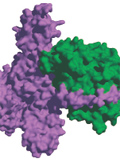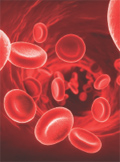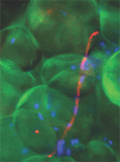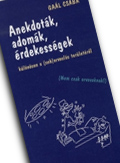The eLitMed.hu medical portal uses computer cookies for convenient operation. Detailed information can be found in the Cookie-policy.
Lege Artis Medicinae - 2013;23(03-04)
Content
[Beyond the wrinkles: botulinum toxin for the treatment of focal dystonia]
[Botulinum toxin (BTX) is used in various fields including biological warfare as well as cosmetic applications. However, its ability to block neuromuscular transmission provides a unique option for the therapy of diseases associated with increased muscle tension. BTX is effective in both striated and smooth muscles, which makes it applicable for a number of clinical purposes beyond its cosmetic use. Clinical applications include treatment of focal dystonias, the most common form of which is spastic torticollis (cervical dystonia) and blepharospasm. As BTX therapy is a safe, efficient and first-line treatment option in focal dystonias, the recognition of these diseases and their differential diagnosis might be important in almost all clinical fields, especially in ophthalmology, psychiatry, orthopedic surgery and rheumatology. The aim of this review is to present BTX therapy as a treatment option for these diseases.]
[The effect of obesity on cardiovascular diseases and the significance of the obesity paradox]
[Obesity represents a major health burden worldwide. Besides its growing prevalence, obesity contributes to the development of many cardiovascular diseases and thus increases the incidence of hypertension, diabetes, cardiomyopathy, heart failure, myocardial infarction, arrhythmias and stroke. Surprisingly, however, recent studies showed that in some cases obesity might improve survival and decrease the risk of mortality. This phenomenon has been named the obesity paradox. In this paper, we discuss the findings regarding this phenomenon and its possible biological explanations. We also draw the attention to the beneficial effects of individually tailored weight reduction therapy.]
[Apixaban: the newest oral anticoagulant in Hungary for the treatment of patients with atrial fibrillation]
[In the past few years a number of articles have been published on the new oral anticoagulants (Xa-factor inhibitors, thrombin inhibitors). These new agents are increasingly used in the daily clinical practice in Hungary. The new oral anticoagulants have been shown to be at least as effective in the prevention of stroke and systemic embolization related to non-valvular atrial fibrillation as K vitamin antagonists. Moreover, their use is safe, can be administered in a daily fixed dose and, even in case of long-term use, they do not require regular laboratory testing. This review aims to summarise the most important theoretical and practical information on the newest direct Xa-factor inhibitor agent apixaban from the perspective of a cardiologist.]
[A new option in insulin therapy that decreases the risk of hypoglycaemia]
[Insulin degludec is a novel, ultra-long acting basal insulin analogue with a safety and efficacy similar to those of insulin glargine. Its main advantage is its ability to significantly reduce hypoglycaemia, particularly nocturnal hypoglycaemia. We present in detail the results of the BEGIN clinical studies with degludec.]
[Health-economic analysis of diseases related to disturbed neonatal adaptation: a cost of illness study]
[OBJECTIVES - The aim of our study is to perform a health-economic analysis of diseases related to disturbed neonatal adaptation by assessing the burden of health care costs in Hungary. DATA AND METHODS - Data were derived from the financial dataset of the National Health Insurance Fund Administration (OEP) covering year 2009. Four diseases were included in the analysis: polycystic ovary syndrome (E2820), retinopathy of prematurity (H3510), hyperstimulation of ovaries (N9810) and respiratory distress syndrome of the newborn (P2200). RESULTS - The annual health insurance costs of the assessed diseases were the following: polycystic ovary syndrome: 78.9 million Hungarian Forints (HUF) or 281 160 Euro (EUR), retinopathy of prematurity: 41.3 million HUF (147 090 EUR), hyperstimulation of ovaries: 8.7 million HUF (30 839 EUR) and respiratory distress syndrome of the newborn: 1.562 million HUF (5 567 336 EUR). We found by far the highest annual per capita health insurance expenditure for respiratory distress syndrome of the newborn (1,43 million HUF or 5098 EUR/patient/year). Hyperstimulation of ovaries (58 073 HUF or 207 EUR/patient/year), retinopathy of prematurity (19 513 HUF or 70 EUR/patient/year) and polycystic ovary syndrome (7679 HUF or 27 EUR/patient/year) was associated with significantly lower annual per capita health insurance expenditure. CONCLUSIONS - The diseases related to disturbed neonatal adaptation have substantial annual health insurance expenditures (1 689 million HUF or 6.02 million EUR) and of these diseases respiratory distress syndrome of the newborn has the highest burden of disease.]
[Detection of endemic MRSA colonisation in a retirement home]
[Methycillin-resistant Staphylococcus aureus (MRSA) colonisation was proved in a retirement home. A resident of the social institution (a 83-year-old man) was hospitalised and was cared for in a ward where a patient positive for MRSA was treated. Screening tests of the above mentioned resident, one of his room-mates at the retirement home as well as three of the four nurses being on duty at the weekend when the man returned to the social institution from the hospital proved the presence of MRSA colonisation. The screening test, which had been extended to the whole staff due to epidemiological reasons and also because of their anxiety, revealed MRSA positivity in the throat and nasal mucus of a fourth nurse. We presumed that the patient released from the hospital had infected his roommate as well as the four nurses. In order to investigate the epidemiological correlations we requested the cultured strains to be typified. With the use of phage typification, three different types of MRSA strains were identified in the six persons positive for MRSA, and a further MRSA strain could not be typified with the basic phage sequence. We review some interventions with regard to the avoidance and prevention of methycillin- resistant Staphylococcus aureus infection, which we had the opportunity to order as well as implement at the retirement home. We raise some of the problems we encountered.]
1.
Clinical Neuroscience
Is there any difference in mortality rates of atrial fibrillation detected before or after ischemic stroke?2.
Clinical Neuroscience
Factors influencing the level of stigma in Parkinson’s disease in western Turkey3.
Clinical Neuroscience
Neuropathic pain and mood disorders in earthquake survivors with peripheral nerve injuries4.
Journal of Nursing Theory and Practice
[Correlations of Sarcopenia, Frailty, Falls and Social Isolation – A Literature Review in the Light of Swedish Statistics]5.
Clinical Neuroscience
[Comparison of pain intensity measurements among patients with low-back pain]1.
Clinical Neuroscience Proceedings
[A Magyar Stroke Társaság XVIII. Kongresszusa és a Magyar Neuroszonológiai Társaság XV. Konferenciája. Absztraktfüzet]2.
3.
Journal of Nursing Theory and Practice
[A selection of the entries submitted to the literary contest "Honorable mission: the joys and challenges of our profession" ]4.
Journal of Nursing Theory and Practice
[End of Life and Palliative Care of Newborns in the Nursing Context]5.
Journal of Nursing Theory and Practice
[Aspects of Occupational Health Nursing for Incurable Patients ]






















